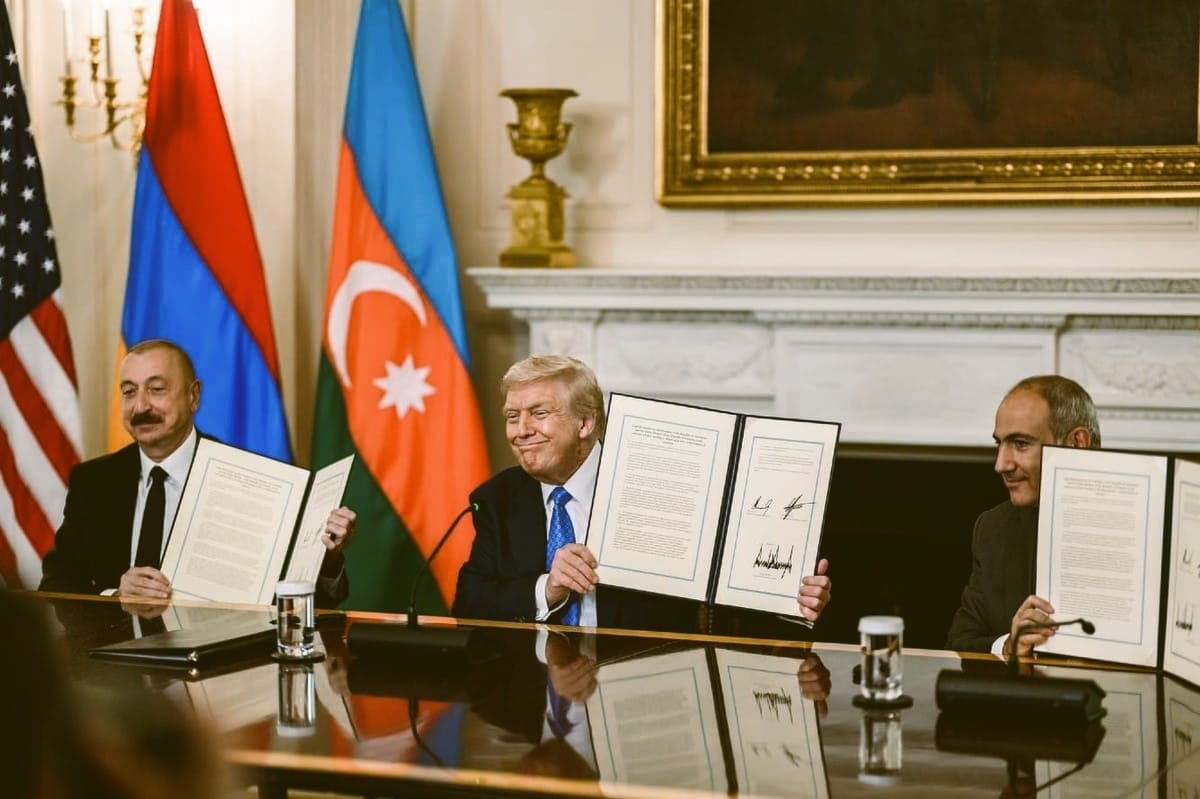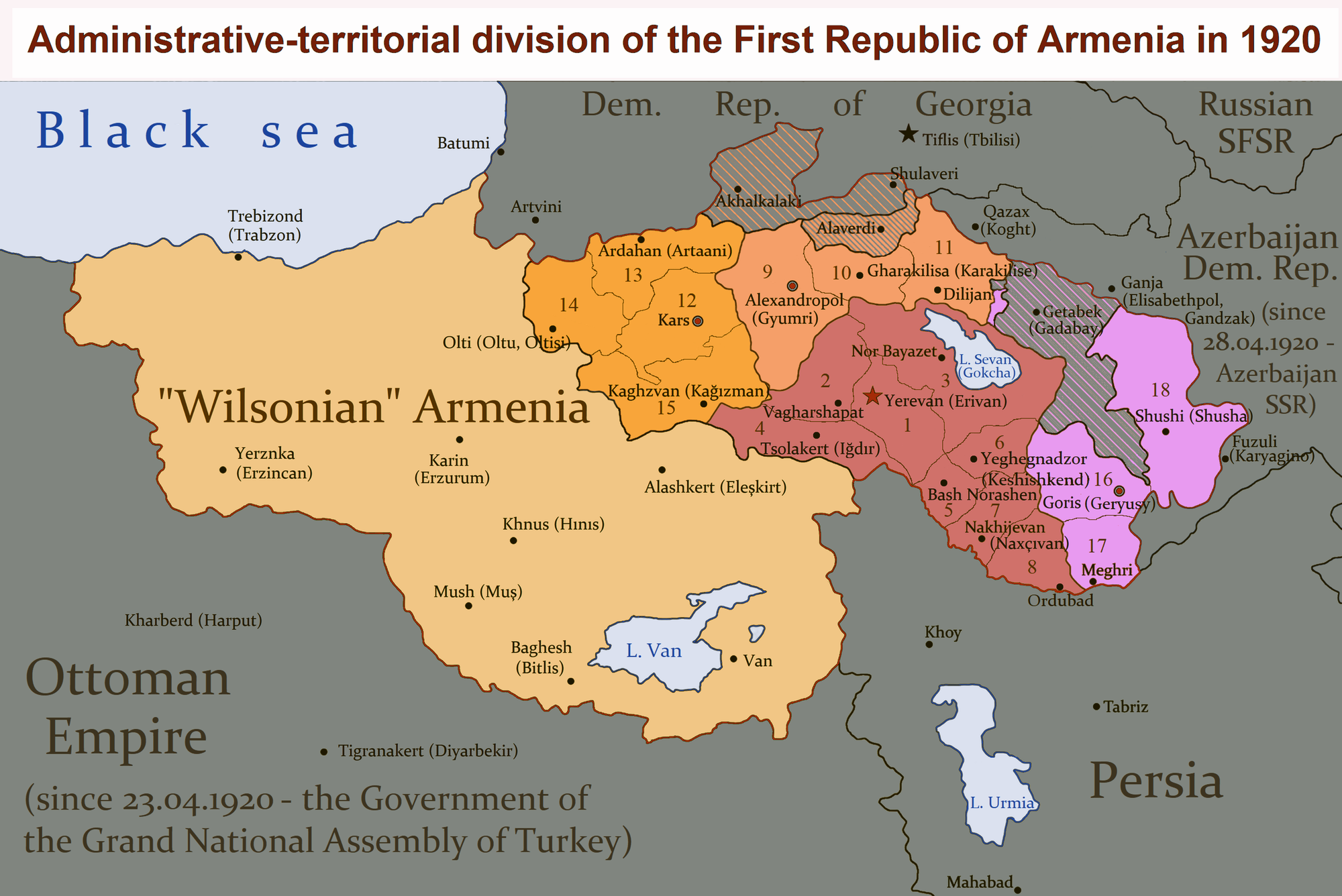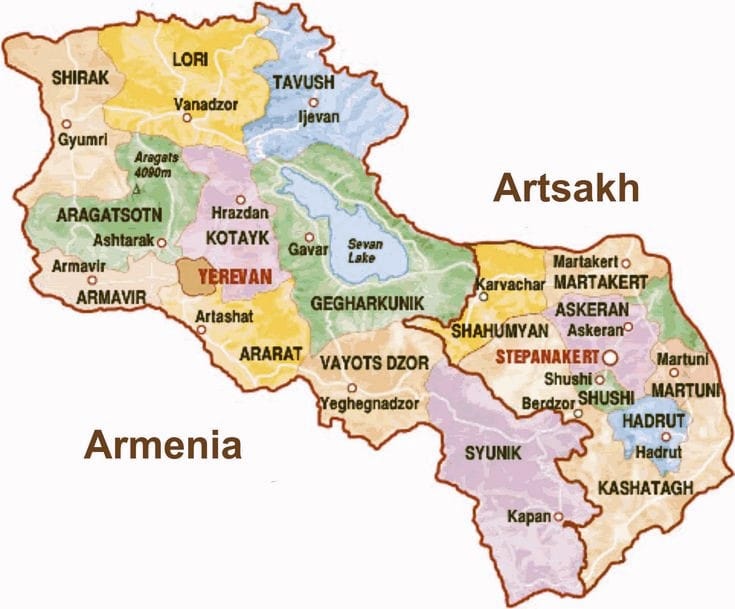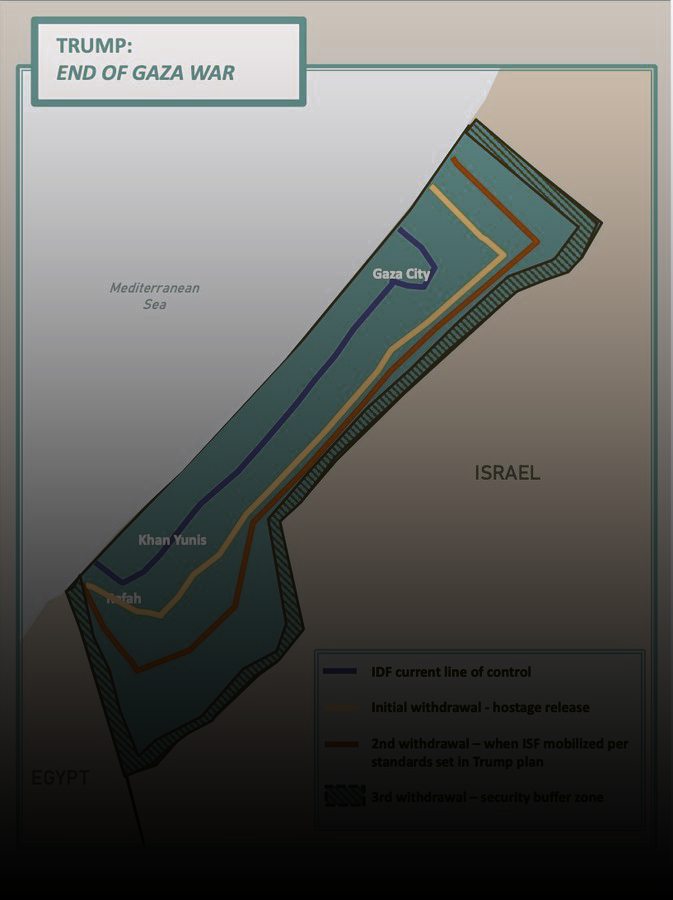“Crossroads of the World” or a Turkish-Azerbaijani Colony: What Future Awaits Armenia?
Throughout its modern history, Armenia has aspired to play the role of a geopolitical hub where the interests of multiple major players intersect—both on the Eurasian and global scale. Yerevan positioned itself as a state maintaining equally good relations—and thus prospects for mutually beneficial cooperation—with Russia, Iran, China, India, the EU, and the United States.
Recently, against the backdrop of the discourse of an “era of peace,” Armenia has also declared its readiness to engage constructively with its age-old adversaries: Turkey, which has neither recognized nor condemned the Armenian genocide of the early 20th century, and Azerbaijan, which has resumed the practice of mass killings in Nagorno-Karabakh and the expulsion of its Armenian population.
A milestone in this process could have been the Armenian-Azerbaijani talks held in Washington on August 8. However, their significance and outcomes proved to be far from clear for the republic: instead of becoming a Eurasian logistics hub and a crossroads of political interests for regional and global powers, Armenia now risks turning into a state dependent on Ankara and Baku.

Armenia at the Intersection of International Interests
Historically, Armenian lands and the Armenian people constituted a frontier—first of the Hellenistic* and later of the Christian worlds—simultaneously embodying their core values and separating them from “barbarian” and later from Muslim territories.
* Hellenism – the period from 323 to 30 BCE. The geographical boundaries of the Hellenistic world are generally considered to include the territory of mainland Greece, Macedonia, Egypt, as well as the countries of the East stretching from Asia Minor and Palestine to northwestern India.
The Republic of Armenia’s attainment of independence in 1991 raised a whole range of questions regarding the role this country would play in the international political and economic framework. In the 2010s, against the backdrop of certain economic achievements, an improved standard of living, and the implementation in the South Caucasus of Russian (EAEU, “North–South Corridor”) and Chinese (“One Belt, One Road”) integration and transport initiatives, Armenia had a chance to become an important transit hub.
Particular attention was paid to the transit of goods from Iran through Armenia to Georgia’s Black Sea ports and, in the longer term, with the connection of the Georgian and Abkhaz railways, directly to Russia and back. This prospect, however, was hampered by difficult terrain and inadequate infrastructure: Armenia has no railway linking the Iranian and Georgian borders, and the construction of such a line would cost approximately $4.5 billion—a sum neither Yerevan nor its partners had at their disposal. As for Chinese transport projects on Armenian territory, these were altogether unrealistic due to the Azerbaijani and Turkish blockade.
The unblocking of transport routes in the South Caucasus, proclaimed after the Second Karabakh War of 2020*, was supposed not only to lift the Turkish-Azerbaijani restrictions on Armenia but also gave Baku the opportunity to demand the creation of an extraterritorial “Zangezur Corridor” through the Republic of Armenia. This corridor would deprive Yerevan of sovereignty over part of the republic’s internationally recognized territory and, running along the Iranian border, could at the very least complicate communications with Iran, one of Armenia’s key trading partners.
* The Second Karabakh War – a conflict between Azerbaijan and the Nagorno-Karabakh Republic, supported by Armenia, which lasted from September 27 to November 19, 2020. During the hostilities, Azerbaijani forces took control of 5 cities, 4 towns, and 286 villages, as well as the entire Azerbaijani-Iranian border.

“Crossroads of the World”
The Armenian leadership was well aware of the risks inherent in such a scenario. In 2023, it presented in Tbilisi its own vision for future unblocking—the “Crossroads of the World” initiative. This concept called for the opening of borders on the basis of preserving and respecting state sovereignty. Yet after its victory in Karabakh, Azerbaijan—tied to Turkey by the “One Nation – Two States” formula and vastly superior to Armenia in military terms—rejected this approach and exerted constant pressure on Yerevan: military (through border provocations), political (with repeated threats to resume hostilities), and humanitarian (by holding Armenian prisoners of war on Azerbaijani territory).
Washington’s Concessions to Armenia
The culmination of these processes was the signing, on August 8, 2025, in Washington, of the “Agreement on the Establishment of Peace and Interstate Relations between the Republic of Armenia and the Republic of Azerbaijan.” The document clearly demonstrated Yerevan’s readiness to make major concessions. According to the agreement, Armenia recognized the Karabakh issue as closed and renounced the activities of the international Minsk Group (headed by Russia, France, and the United States).
This was codified in: Article I (on mutual recognition of borders, respect for territorial integrity, inviolability, and political independence of the parties), Article II (on renunciation of territorial claims), Article III (on refraining from the use or threat of force), and Article IV (on the parties’ commitment to non-interference in each other’s internal affairs).

Of particular note is Article VIII, which obliges both countries to combat all forms of intolerance, separatism, discrimination, and similar manifestations within their jurisdictions. This clause effectively echoes Azerbaijan’s long-standing demand that Armenia amend its Constitution. Armenia’s Basic Law, in its preamble, refers to the 1990 Declaration of Independence, which in turn cites the resolution “On the Reunification of the Armenian SSR and Nagorno-Karabakh.” The Declaration also affirms continuity with the state tradition of the First Republic of Armenia (1918–1920), whose territory extended beyond the present 29,800 square kilometers of the Republic of Armenia.

The Armenian Constitutional Court had previously ruled that these provisions do not constitute territorial claims against neighboring states. However, Azerbaijan takes a different view and insists on amending Armenia’s Basic Law. This demand was reaffirmed even after the signing of the U.S. agreement—most notably by Hikmet Babaoğlu, a deputy from the ruling party in the Azerbaijani parliament, and Elchin Amirbekov, Assistant to the President of Azerbaijan for Special Assignments.
It is worth noting that Azerbaijan’s own Constitution contains territorial claims against Armenia, also rooted in its Declaration of Independence, which asserts continuity with the Azerbaijan Democratic Republic of 1918–1920. That entity laid claim to several Armenian provinces, including Syunik, Vayots Dzor, and Tavush, among others. Despite Article XII of the Washington agreement (which stipulates that, in relations between the two countries, international law takes precedence over their domestic legislation), Azerbaijani authorities interpret the U.S.-brokered accords as grounds for intensifying pressure on Armenia.

However, in the context of possible global shifts, the most important aspect is not the agreement itself, but rather the supplementary documents signed in the American capital—memoranda on transport communications, energy, and technological cooperation.
The “Zangezur Corridor” and Energy
According to the transport memorandum, the 42-kilometer section in Armenia’s Syunik Province—the very same “Zangezur Corridor”—will, while formally remaining under the sovereignty of the Republic of Armenia, be operated by a private American company.
The memorandum on energy sector development envisions the introduction in Armenia of U.S. modular station technology, which would gradually push Rosatom out of the country. At present, Rosatom services the Armenian Nuclear Power Plant. Moreover, in the future, a gas pipeline may also be routed through the so-called “Zangezur Corridor.” Armenia could be connected to it, thereby replacing its current reliance on Russian and Iranian gas with Azerbaijani supplies. This possibility is already actively discussed, at the very least, in expert circles.
Prospects and Risks
There is no doubt that the details of all these agreements will be clarified in subsequent consultations and more detailed documents. Yet the danger that Armenia might, instead of becoming the “Crossroads of the World” envisioned by its leadership and society, turn into a dependent territory deprived of genuine agency appears all too real.
This dependency could arise either from the alliance of Turkey and Azerbaijan—who have secured for themselves a “Pan-Turkic arc,” a direct land link across Armenian territory granting Ankara access to Central Asia while posing a serious security challenge to Iran—or from the United States, Turkey’s NATO ally, which has its own interests in the South Caucasus, Central Asia, and of course, Iran.
Furthermore, Israel—arguably Washington’s closest ally in the Middle East and beyond—also stands to benefit from the “Zangezur Corridor.” By weakening Iran through it, Israel gains access to the above-mentioned regions alongside the U.S. and Turkey, a partnership whose supposed “conflict” with Tel Aviv is unlikely to alarm anyone seriously.
By agreeing, on the one hand, to this arrangement while, on the other, steadily distancing itself from Russia and Iran (given that U.S. control over the Zangezur Corridor would at least indirectly allow Washington to oversee Iranian cargo movements into Armenia), Yerevan risks finding itself encircled by Azerbaijan, Turkey, and their allies. Even Georgia, to the north—heavily influenced economically by Ankara and Baku—can hardly be regarded as a “lifeline” in such a scenario.
Already, discussions are underway in Armenian society about a possible closure of the 102nd Russian military base located in Gyumri*. Yet even without such a step, in light of Moscow’s deteriorating relations with Azerbaijan and the Zangezur Corridor falling under American control, Russia would find it extremely difficult to provide Armenia with either military or economic assistance.
* The 102nd Russian military base – the largest Russian military base abroad, located in the city of Gyumri (Armenia). Established in 1995, it has been on combat duty within the framework of the CIS Joint Air Defense System under an interstate treaty for a 49-year term (until 2044).

That said, the level of the Washington agreement gives Yerevan an opportunity to “flip the game.” First, before the document is implemented in practice, the country still has some time, which can be drawn out until more favorable changes occur in the region and the world. Above all, this refers to the conclusion of the Special Military Operation in Ukraine and a subsequent shift of Russia’s focus to the South Caucasus. Second, against the backdrop of the growing strength of the Turkish-Azerbaijani tandem and U.S. support for it—including Washington’s removal of all restrictions on arms exports to Azerbaijan—it is crucial for Armenia to align itself with a power center still capable of protecting it both physically and economically.
Despite the sharp decline in Russia’s popularity within Armenian society following the loss of Nagorno-Karabakh and the expulsion of its Armenian population in the presence of Russian peacekeepers—and notwithstanding the obvious deterioration of Armenian-Russian relations in recent years—there is no alternative to Russia in this case.
No other country, apart from the Russian Federation, is either capable of or has even verbally expressed a willingness to provide Armenia with genuine assistance in the event of renewed Azerbaijani aggression. Few could also guarantee Armenia the coveted role of a “Crossroads of the World.” As a member of the EAEU, Armenia enjoys the advantages of this union while also serving as its bridge to Iran. In the future, it could accumulate on its territory trade flows among its friendly and neutral Eurasian partners—from India (as part of the North–South artery) and China to Russia and European states. Should tensions between Russia and Azerbaijan intensify, Armenia would become Moscow’s “corridor alternative” and that of the emerging Eurasian power pole forming around it.
Moreover, such a turn of events, triggering profound geopolitical changes, could help Yerevan—and the Armenian nation as a whole—regain previously lost lands, both Artsakh and, potentially, Western Armenia.
For now, what matters is not to make fundamental or irreversible concessions, but rather to bide time patiently, provided that the authorities have the necessary political will and society retains its determination…











